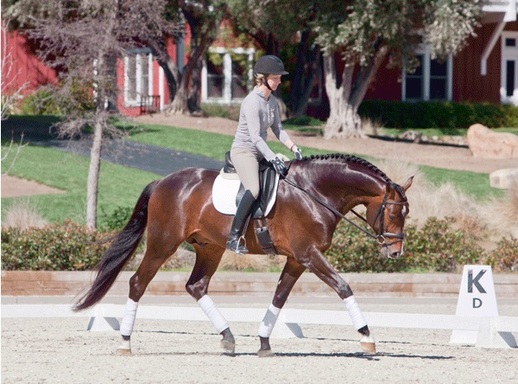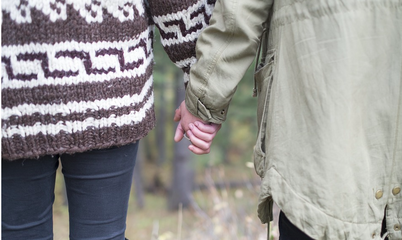Richard's dressage scores were pretty decent--except for that darn stretchy circle. He tried everything to teach his horse to stretch down, to no avail. He leaned forward, coaxing his mare to stretch down. He tried trotting her over widely spaced cavaletti. He tried longeing her in side reins. In desperation, he even tried draw reins. Frustrated, he decided the problem was that he just didn't have "a real dressage horse."
The reason Richard's stretchy circles weren't all that stretchy wasn't that he didn't have "a real dressage horse". No, the reason lie much closer to home: His hands. Here is the secret to riding a stretchy circle.
The video below is making the rounds on social media—for good reason. It is a perfect stretchy circle:
|
If your horse enjoys contact with your hands through the reins, she will stretch forward and down to re-establish that contact when you fingers open and your hands release forward. |
|
|
Photo Credit: CC0 Public Domain
|
Think about holding hands and walking with someone you like. You don't want your hand squeezed tightly, but you don't want a handgrip that is limp and loosey-goosey, either. A twitchy, nervous grip is right out, too, as is the grip from someone who keeps trying to steer you this way and that. And no one likes to be leaned on so that your arms feel like they are being pulled out of their sockets. No, you just want a nice, feeling grip. A comfortable place of tactile communication. |
|
Photo Credit: CC0 Public Domain
|
Now imagine you're walking along together holding hands this way, and there is an obstacle in your path. Your partner moves away from you to get around it. What do you do? If you're enjoying that contact, you don't want to break the connection. So you stretch your arm out to maintain it as your partner moves around the obstacle. |
That is the secret to the stretchy circle. When your horse feels that she is losing contact with your hands, she will stretch forward and re-establish that comfortable feel. If you now maintain your position and allow her to re-establish that contact, she will continue moving forward at the same pace, on the same arc. When you squeeze your hands to bring her back to you, she will raise her head and neck in order to allow the contact to be re-established at the a higher frame. If she didn't do that, your contact would be much too strong as you gather up your reins and bring your hands back into position.
So a stretchy circle is indeed stretchy, not just because the horse's body acts like a rubber band lengthening and shortening but because the connection with your hands lengthens and shortens in order to maintain a comfortable connection.
So don't bother putting up cavalletti, squeezing your legs, pulling your horse's head down, leaning over, or any of the myriad other ineffective things riders do to "teach their horse how to ride a stretchy circle." The secret is quite literally in YOUR hands.
More about how to develop this kind of elastic contact can be found here.
You may also be interested in these articles:
What Happens When You Release The Inside Rein? Nothing--Or You're Riding Wrong!
Why This Olympic Medalist Recommends Knotting Your Reins
How To Tell Whether You Have a Good Riding Instructor
Twelve Ways Horses Inspire and Enrich Our Lives
So a stretchy circle is indeed stretchy, not just because the horse's body acts like a rubber band lengthening and shortening but because the connection with your hands lengthens and shortens in order to maintain a comfortable connection.
So don't bother putting up cavalletti, squeezing your legs, pulling your horse's head down, leaning over, or any of the myriad other ineffective things riders do to "teach their horse how to ride a stretchy circle." The secret is quite literally in YOUR hands.
More about how to develop this kind of elastic contact can be found here.
You may also be interested in these articles:
What Happens When You Release The Inside Rein? Nothing--Or You're Riding Wrong!
Why This Olympic Medalist Recommends Knotting Your Reins
How To Tell Whether You Have a Good Riding Instructor
Twelve Ways Horses Inspire and Enrich Our Lives
Happy Riding!
Copyright May 20, 2016, Denise Cummins, PhD
We thought you would also be interested in...
|
Cool Max Boot Sock
|
Surcingle Pad
|
Professional's Choice
Overreach Bell Boots |




















